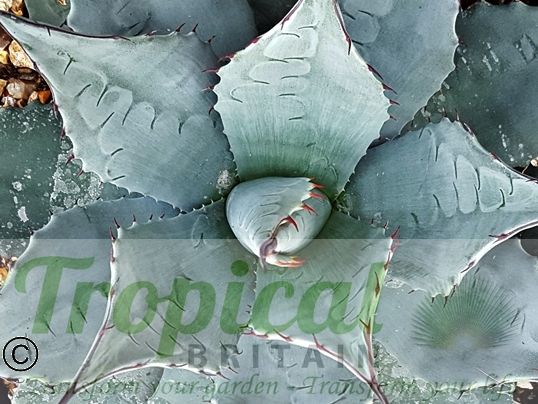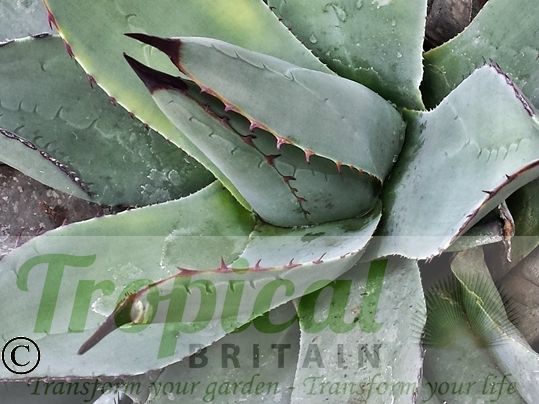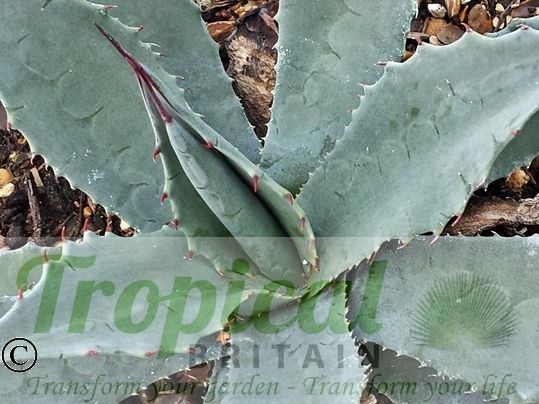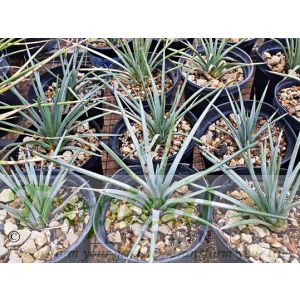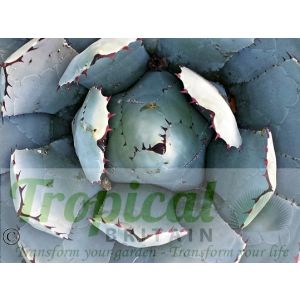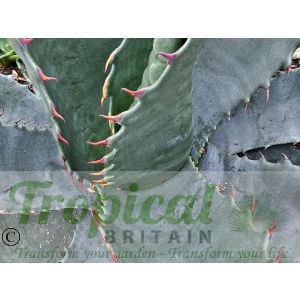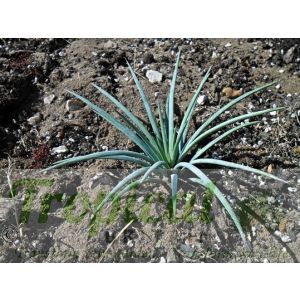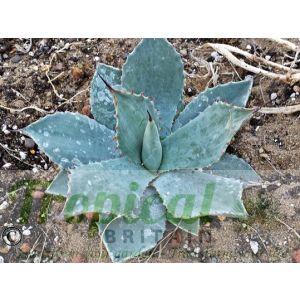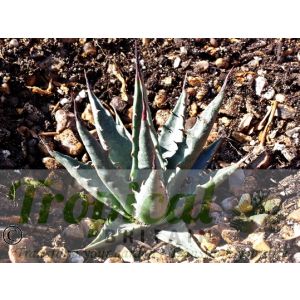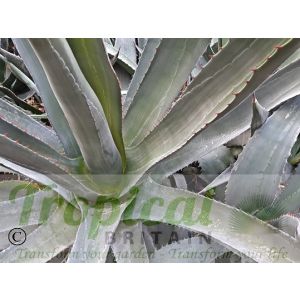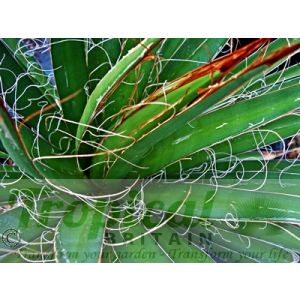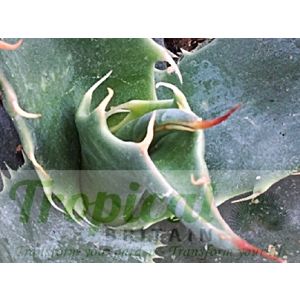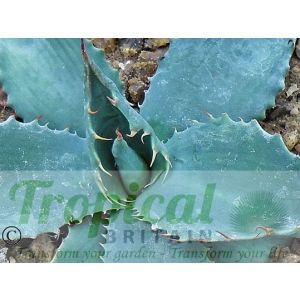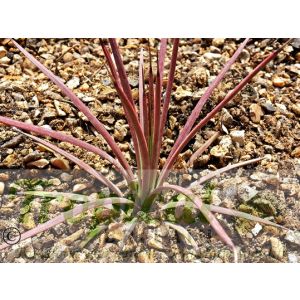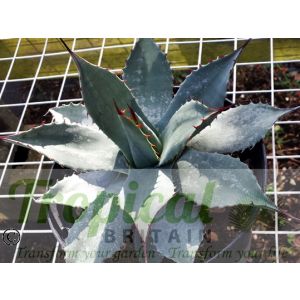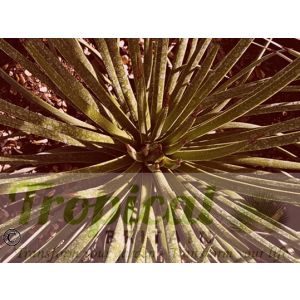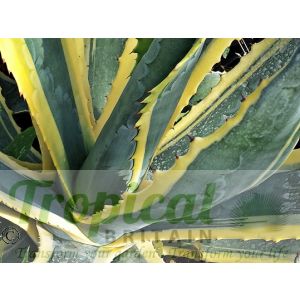- Stunning architectural form
- Solitary or producing offsets
- Extremly hardy
- Full sun
Agave parryi ssp neomexicana is one of the hardiest of all Agaves and probably the hardiest in the very hardy Parryi group, occupying the extreme northeasterly range of that group where it occurs in southeast New Mexico and west Texas growing high into the Guadalupe Mountains at elevations up to 2600m and over the border into Coahuila and Chihuahua. It is found on rocky mountainous slopes and in the cover of oak and pine forest down through limestone gradients, arid grassland and desert scrubland, experiencing temperatures down to a mind-numbing -28C. In the moister atmospheric conditions of the UK winter somewhere between -12C and -15C can be considered its limit. Like all Agaves it needs perfect drainage and the drier it is kept in winter, the better.
Agave parryi ssp neomexicana has slightly thinner, shorter leaves than its type species, a more open form, larger flowers and a greener, less glaucous colouration. Often referred to as Agave neomexicana it was reclassified as a subspecies of Agave parryi in 1992. It can be a solitary species with a very striking symmetrical form but it is more common to find it producing numerous offsets and this can start occuring in plants as young as two years old.
The hearts of Agave parryi ssp neomexicana were baked in earthovens by the Mescalero Apache and formed a staple of their diet. Not, however, a recommended dietary supplement for the avid exotic gardener who may prefer to simply grow it to a ripe old specimen and appreciate its stunning architectural beauty.
Highly recommended.
Now available in 3 litre pots. Bargain!
Additional Information
| Order | Asparagales |
|---|---|
| Family | Asparagaceae |
| Sub-Family | Agavoideae |
| Synonyms | Agave neomexicana, Agave parryi var. neomexicana |
| Geographical Origin | USA: New Mexico and Texas; Mexico: Coahuila and Chihuahua |
| Cultivation | Full sun. Perfect drainage. Alkaline, gritty, gravelly substrate |
| Eventual Height | 1m |
| Eventual Spread | 1m |
| Hardiness | Hardy down to about -12C depending on local conditions and microclimate. In drier areas, with perfect drainage, it may withstand lower subzero temperatures. Fleecing and a rain-cover is always a sensible approach to overwintering Agaves in the UK |

Free DELIVERY
ON ALL ORDERS OVER £99THIS OFFER IS VALID ON ALL OUR STORE ITEMS.
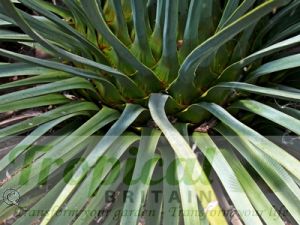
THE PLANTS
- Smaller-Growing Succulents
- Aeonium
- Agave
- Agave americana
- Agave amica
- Agave chrysantha
- Agave cupreata
- Agave deserti
- Agave filifera
- Agave gentryi
- Agave gomezpompae
- Agave havardiana
- Agave horrida ssp horrida
- Agave lechuguilla
- Agave mitis var mitis
- Agave montana
- Agave palmeri
- Agave parryi
- Agave polianthiflora
- Agave striata
- Agave stricta Rubra
- Agave toumeyana
- Agave univittata
- Agave utahensis
- Agave victoriae-reginae - Huasteca Canyon
- Aloe
- Beschorneria
- Bryophyllum
- Dasylirion
- Furcraea
- Hesperaloe
- Hesperoyucca
- Nolina
- Yucca
- Astrophytum
- Austrocylindropuntia
- Brasiliopuntia brasiliensis
- Cereus
- Chamaecereus silvestrii
- Cleistocactus
- Cumulopuntia
- Cylindropuntia
- Echinocereus
- Echinopsis
- Epiphyllum
- Ferocactus
- Gymnocalycium
- Hatiora
- Kroenleinia grusonii
- Lophocereus
- Maihuenia
- Mammillaria
- Matucana
- Myrtillocactus geometrizans
- Opuntia
- Opuntia arenaria SB964
- Opuntia atrispina
- Opuntia basilaris
- Opuntia chisosensis SB992 Brewster Co, TX
- Opuntia cymochila - Brewster Co, TX
- Opuntia engelmannii var. sandia
- Opuntia erinacea
- Opuntia fragilis
- Opuntia humifusa
- Opuntia lindheimeri - Beeville, TX
- Opuntia phaeacantha
- Opuntia pottsii var. nova DJF1441 SW Albuquerque, NM
- Opuntia robusta
- Opuntia sandiana
- Opuntia sanguinicola
- Opuntia stricta
- Opuntia strigil
- Opuntia trichophora
- Oroya peruviana
- Parodia
- Polaskia
- Rhipsalis
- Schlumbergera
- Stenocactus
- Stetsonia
- Tephrocactus
- Alocasia
- Amorphophallus
- Arisaema
- Arum
- Calla
- Caladium
- Colocasia
- Dracunculus
- Monstera
- Helicodiceros muscivorus
- Philodendron
- Pinellia
- Remusatia
- Sauromatum
- Spathantheum
- Typhonium
- Xanthosoma
- Zantedeschia

